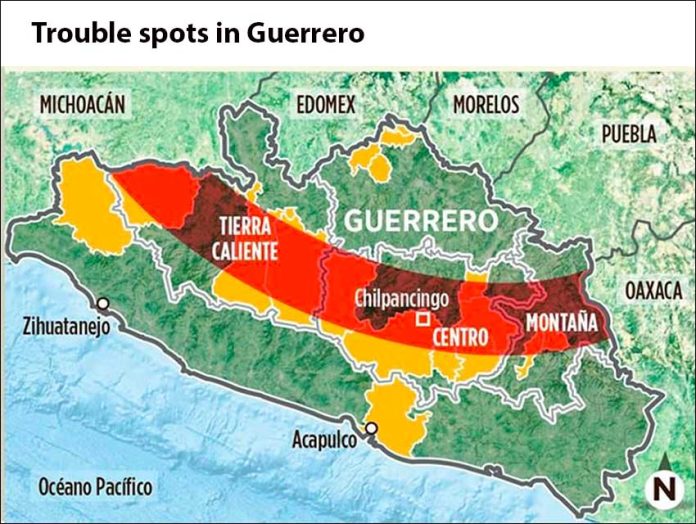Groups of armed civilians in Guerrero, many of which self-identify as community police, operate without any control in 36 of the state’s 81 municipalities, according to the state’s Public Security Secretariat (SSP).
The number of such groups has proliferated over the past seven years, mainly where criminal organizations are involved in turf wars such as the Montaña, Centro and Tierra Caliente regions.
The newspaper Reforma reported today that many members of the groups carry high-caliber weapons whose legal use is restricted to the armed forces.
It also said the groups control large swathes of territory in the state and control access to various regions. Many are involved in extortion and have links to drug cartels while others control access to mines in the state, the report claimed.
According to an SSP study, the number of armed vigilante groups grew during the administrations of former governors Ángel Aguirre and Rogelio Ortega — both of whom represented the Democratic Revolutionary Party (PRD) — and have continued to increase in number under current governor Héctor Astudillo, who took office for the Institutional Revolutionary Party (PRI) in October 2015.
Some groups have disappeared following the arrest of their leaders for alleged links to organized crime while others have sprung up to take their place, Reforma said.
Following an amendment approved last week by the state Congress, the state government will now seek to regulate the conduct of the self-defense groups to ensure that local public security and justice systems that are in force in some Guerrero communities do not violate state and federal laws.
In addition, the majority will no longer be recognized as community police although indigenous and Afro-Mexican communities will retain the right to resolve internal disputes.
Astudillo stressed that the aim of the reform is not to get rid of community police but to regulate them.
Members of one integrated security force — known as the Regional Coordinator of Community Authorities, or CRAC — that operates in Chilapa and Malinaltepec among other municipalities and has a track record of reducing crime will be officially recognized as community police.
Large quantities of opium poppies are produced in rural regions of Guerrero, and drug gangs fight over the territory. In the first six months of this year the state was Mexico’s third-most violent with 1,148 intentional homicides.
Source: Reforma (sp)
